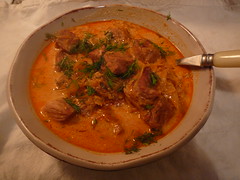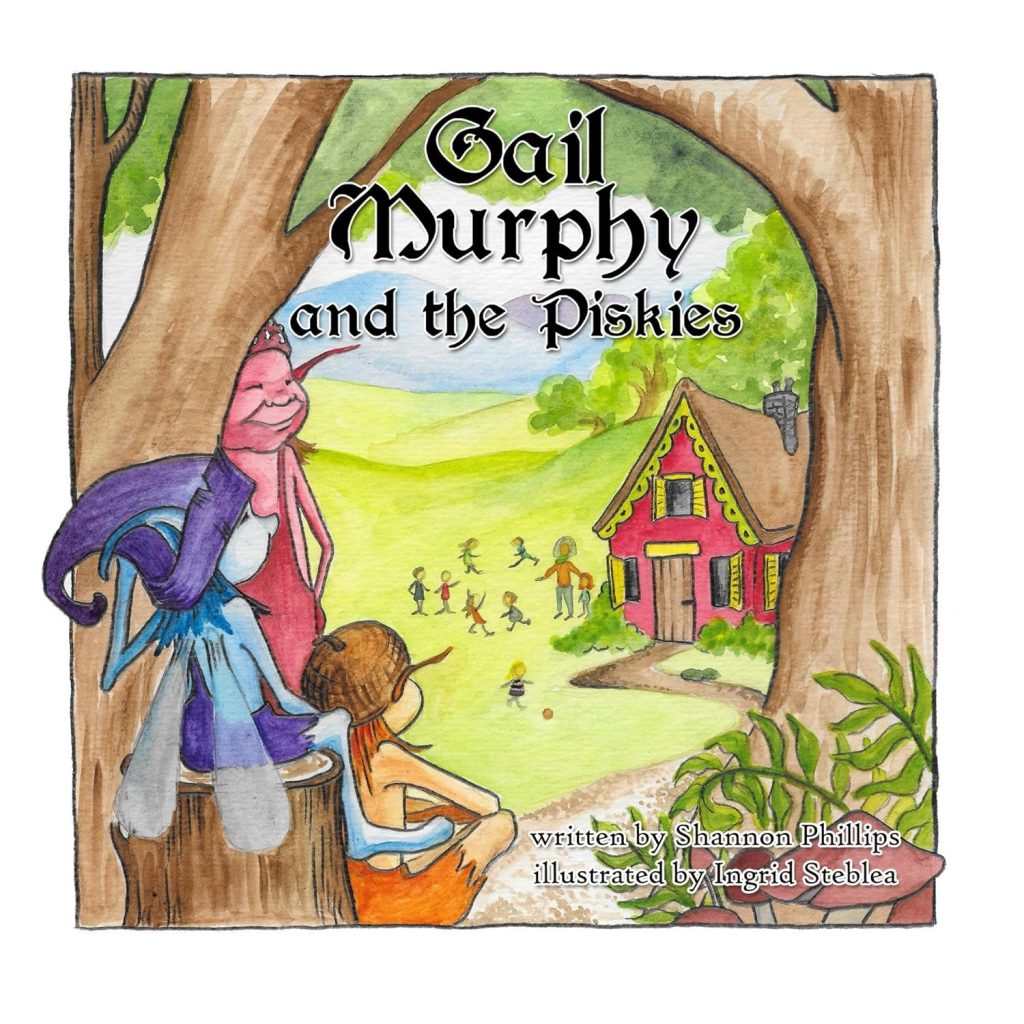Székely Goulash
The goulash we had the other day was really nice. It is, incidentally, gluten-free. The recipe is from America’s Best Lost Recipes, a really excellent cookbook that collects “heirloom” recipes from families across America. Because every recipe has a story behind it, the cookbook is as much fun to read as it is to cook from. Székely Goulash, for instance, apparently “gets its name from the Székely Hungarians, an ethnic minority group in Romania whose name, Szekler, means frontier guard. They guarded the eastern flank of Hungary, which was prone to invasion because of its geographic position in Europe as a crossroads.”

The goulash takes a long time to cook but it isn’t really much trouble. You need 2 pounds of boneless pork loin, cut into 1-inch pieces, patted dry with paper towels and seasoned with salt and pepper. Heat 2 tablespoons of butter and 1 tablespoon of vegetable oil in a Dutch oven over medium-high heat, until the foaming subsides, and then brown the pork on all sides (you’ll have to do it two batches or it will just steam rather than browning properly). This is the most time-consuming step. Incidentally, I used to cut corners when browning meat until I read about the Maillard reaction and how important it is in unlocking the flavor of meat. Now I take the time to brown meat properly. This would probably count as my second substantial improvement as a cook (the first came when I started using home-made chicken broth instead of the storebought stuff).
Anyway, while the pork is browning, chop up two large onions (I used leeks because that’s what we had) and mince a couple of garlic cloves (or get them ready to be put through a garlic press, which is what I always do, as it yields a more intense garlic flavor). Once the pork is browned, transfer it to a plate and pour off all but 1 tablespoon of fat from the pot. Cook the onions until soft, add the garlic along with 2 tablespoons of paprika and stir it around until you can really smell it, about 30 seconds. The recipe specifies to use “sweet, not hot” paprika, but the stuff that is sold in the supermarket simply as paprika will do just fine.
Add the pork back to the pot and stir in one and a half cups of chicken broth, a tablespoon of chopped fresh dill, a teaspoon of salt, 1/2 teaspoon of pepper, and bring it all to a simmer. Also, turn your oven on to 300 degrees. When the broth is simmering, cover the Dutch oven and transfer the pot to the oven, where you will let it cook for an hour and a half.
After its time in the oven the meat should be just about tender. Pull the stew out and stir in 2 pounds of sauerkraut, drained and rinsed. You want the fresh stuff (from the deli or a vacuum-sealed package) if you can get it. Also stir in 2 teaspoons of sugar. Then put it back in the oven for another 45 minutes. At this point the pork should be really tender, and if it isn’t, keep cooking it. When it’s nice and tender take the stew out of the oven and stir in 2 cups of sour cream. Serve it with extra chopped fresh dill, and if you want, spätzle, boiled potatoes, or hot buttered egg noodles. We ate it plain and were very happy with it that way.
Here is a bonus picture of Robin with a little bit of goulash left on his face and collar:












